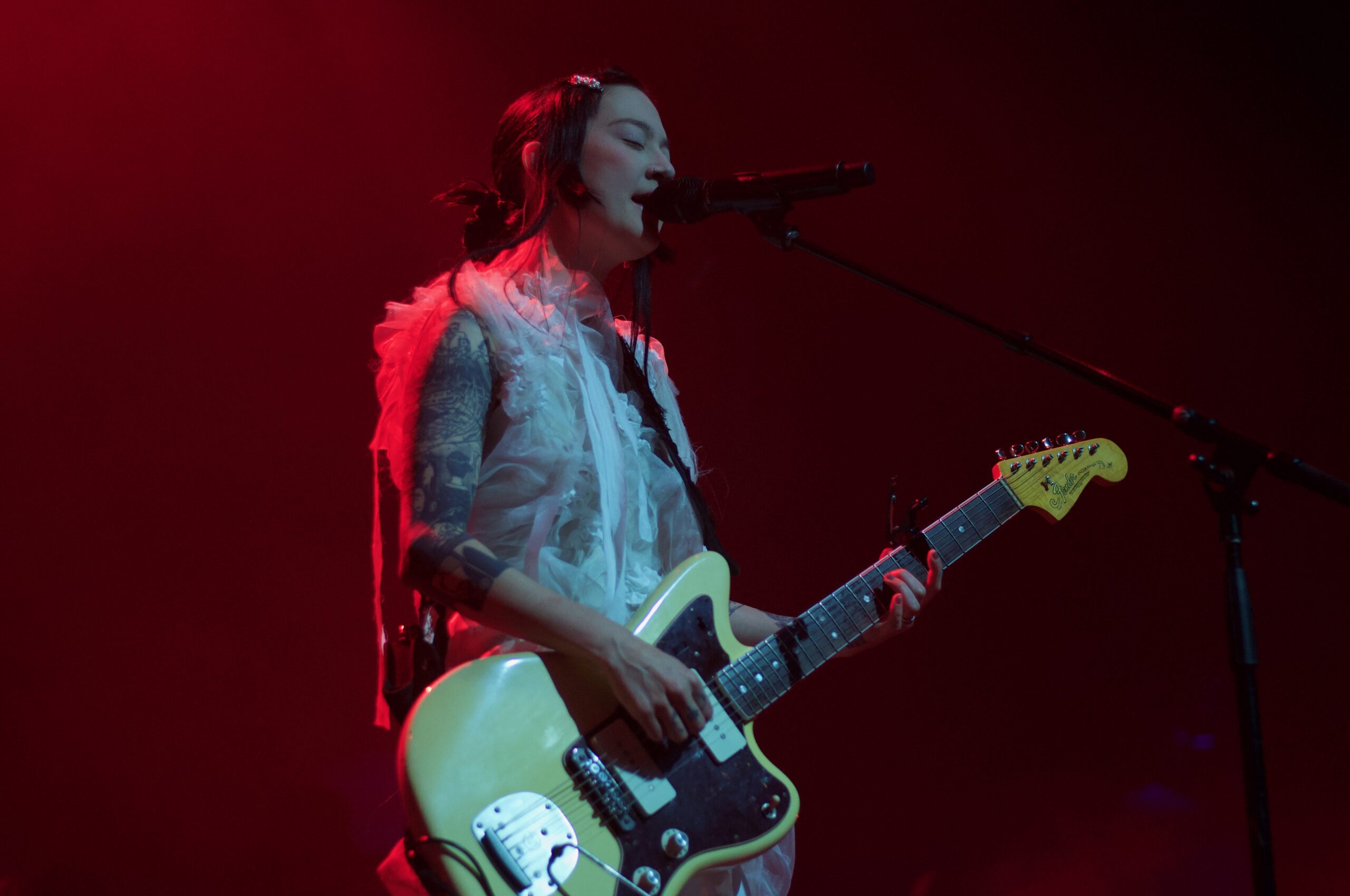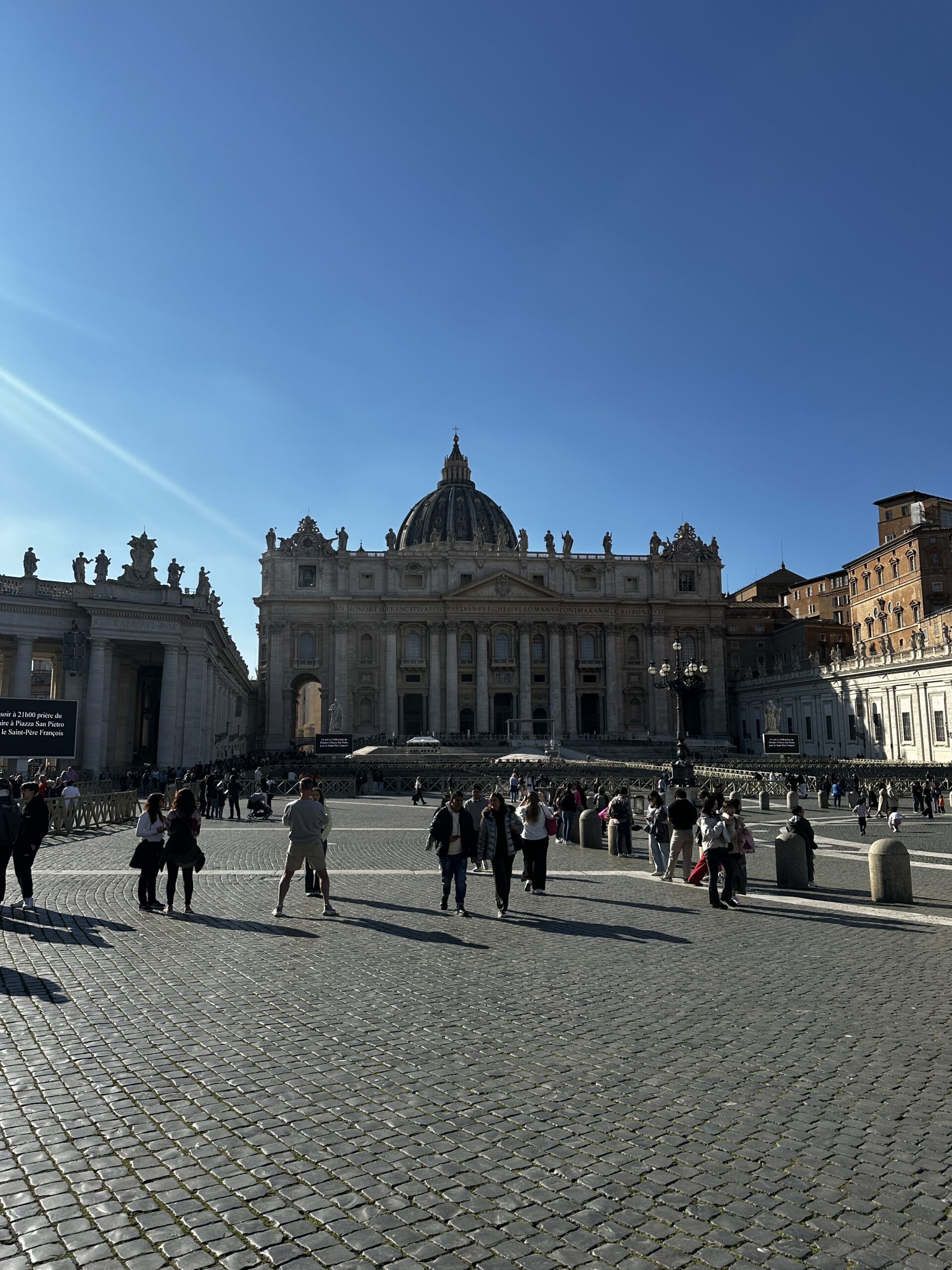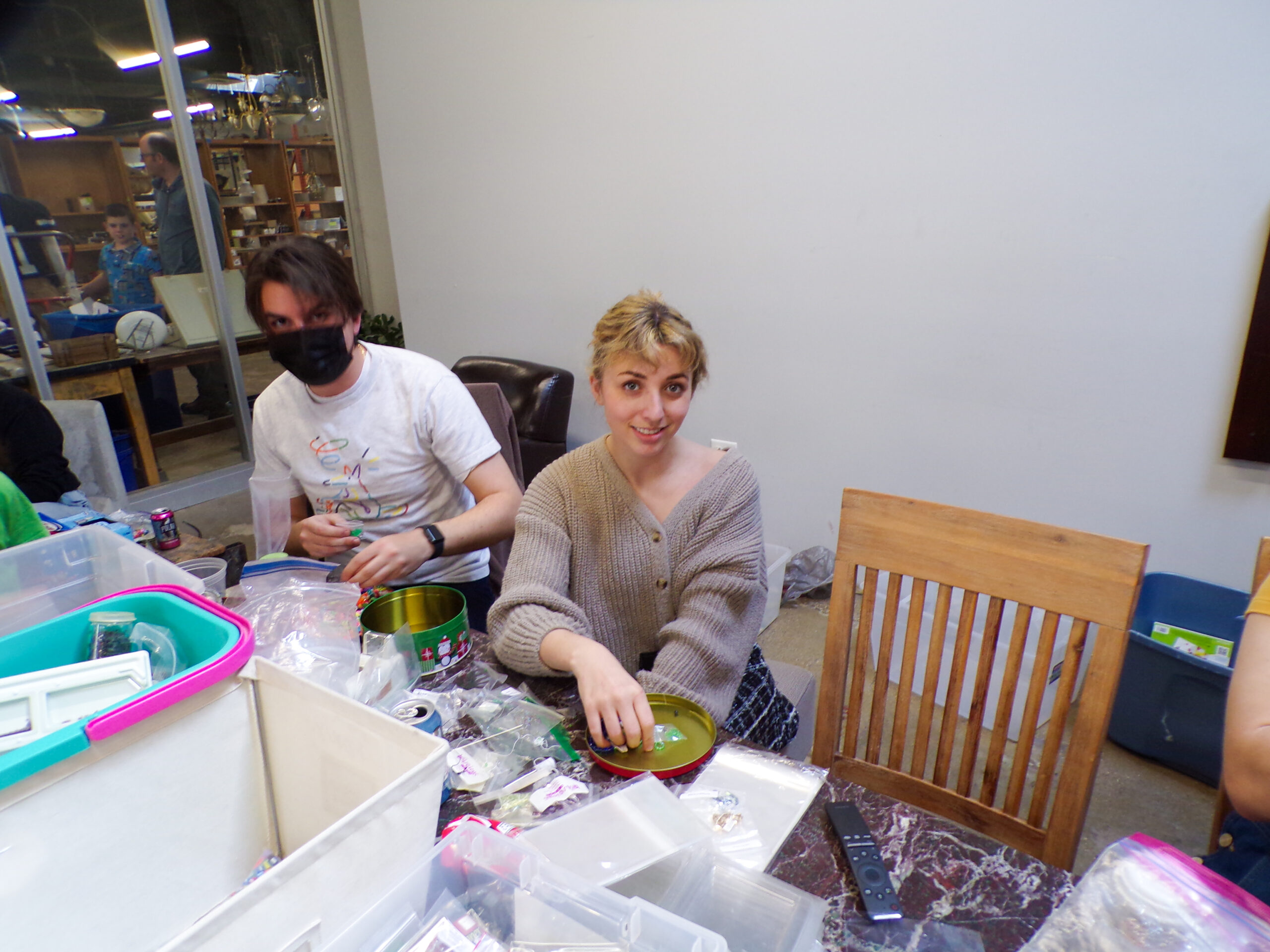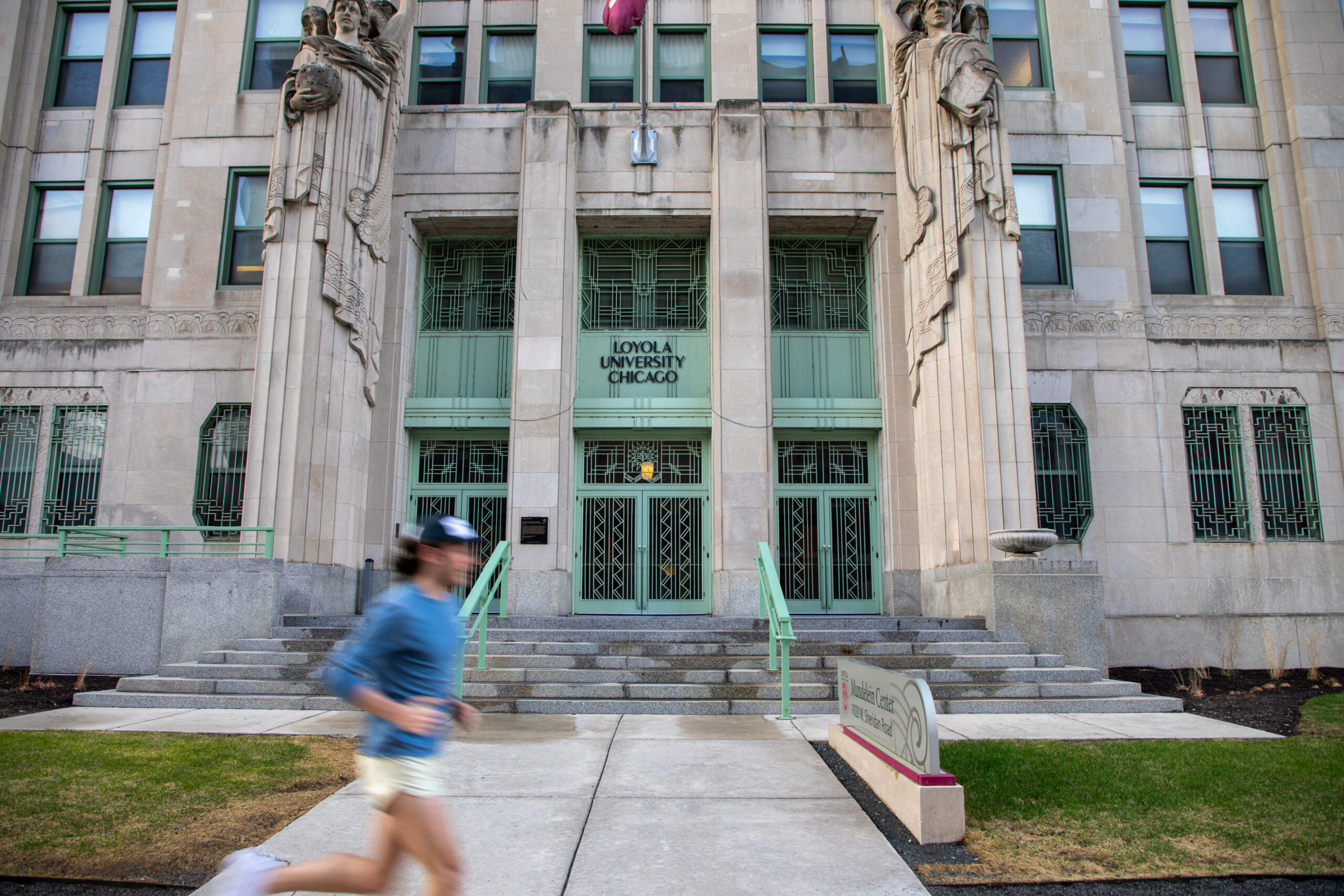The Phoenix looks back at the record of Loyola’s 24th President as her final day at university passes.
President Jo Ann Rooney’s tenure has come to an end. Sept. 30 was her final day at the university. Her time as the university’s chief executive was defined by a global health crisis and the university’s growth in size and prominence following the men’s basketball team’s Cinderella run in the 2018 NCAA Tournament.
“It is difficult to adequately express my deep appreciation and sincere gratitude to the Loyola University Chicago community,” Rooney wrote in her final email as president. “For over six years, we have worked side by side, dreaming big dreams, implementing audacious goals, tackling difficult issues, and moving obstacles out of the way, all in the spirit of animating our Jesuit, Catholic mission.”
Through a Loyola spokesperson, Rooney declined multiple interview requests for this article.
Rooney, the university’s first female and first non-Jesuit president, started at Loyola in 2016 succeeding interim president John Pellisoro, who held the post for 11 months following the resignation of President Micheal J. Garanzini, S.J. in 2015. Garanzini’s 14 year stint as president involved multiple campus construction projects and sustained enrollment growth, according to the Association of Jesuit Colleges and Universities (AJCU).
In her inaugural address, Rooney said the university needed to stop relying on tuition increases to fund operations. Despite this goal and to the chagrin of students, the Rooney administration oversaw tuition increases during each year of her presidency, The Phoenix reported. During her tenure, the cost of tuition increased by $6,380, The Phoenix reported.
This included an especially controversial 3.1% increase for the 2020-21 school year, which amounted to an additional $1,370 in tuition a year. The tuition increase went ahead despite the majority of Loyola’s classes being held remotely and campus buildings being closed due to the outbreak of COVID-19.
Following an uproar from parents and students dealing with instability during the pandemic, the university cut the cost of room and board but maintained the full tuition increase arguing the quality of classes was not worsened by the shift online, The Phoenix reported.
Rooney helped steer the university through an unprecedented crisis during the COVID-19 pandemic. On March 12, 2020, Rooney’s office sent an email to students announcing the decision to move classes online and informed students living on campus they had one week to leave, The Phoenix reported.
Loyola refunded room and board costs for the remaining months of the 2020 spring term and tuition costs were reduced for low-income students. Additionally, to aid students struggling economically during the pandemic, Loyola launched a financial assistance program in June 2020, The Phoenix reported.
The pandemic created a budget shortfall of $99 million, The Phoenix reported, forcing Rooney and the university to make payroll and operational cuts to the budget. Administrative officials saw salary reductions, faculty pay increases were halted and funding was decreased for student organizations and campus events.
One issue which has repeatedly come up during Rooney’s years in office was the presence of racial inequity in Loyola’s Campus Safety. In 2018, two students were detained outside of a men’s basketball game. Outspoken students alleged the officer’s conduct was racially motivated. Later that year, The Phoenix reported most of the individuals stopped by campus safety officers near campus were predominantly minorities and mostly innocent.
In the summer of 2020, students associated with OurStreetsLUC protested against Loyola and its treatment of black students and called for the university to end its relationship with the Chicago Police Department. In the following year, Rooney announced the creation of the Office of Institutional Diversity, Equity, and Inclusion.
The new office unveiled a plan for tackling racial justice at the university called the Anti-Racism Initiative. The first major step by the initiative was the announcement of a new campus safety strategy which emphasized racial equity standards in the department, The Phoenix reported. The biggest change brought on by the plan was the creation of a new bureau in the department intended to increase accountability and investigate instances of alleged racial bias.
Loyola has faced heavy criticism from students in recent years for the way it handles instances of sexual assault on campus. Rooney was not spared from students’ dissatisfaction.
In Sept. 2021, hundreds of students protested on campus, demanding action from the university after allegations of sexual assault committed by students circulated on social media. In 2022, The Phoenix published an investigation which highlighted the shortcomings in the process by which Loyola investigates such allegations.
Following the student outcry in September, the university announced in February it was joining a national collective intended to end sexual violence on college campuses, The Phoenix reported. By joining, Loyola pledged to better prevent and respond to sexual violence on campus.
University officials said that while the decision was not completely influenced by the protests, they were a contributing factor to joining the pact. It remains unclear whether issues surrounding sexual violence have improved in the months since.
Prior to Loyola, Rooney served in the Department of Defense. From 2011 to 2013, she was the Deputy Under Secretary of Defense for Personnel and Readiness and in 2014 was nominated by President Obama to serve as the under secretary of the Navy before she withdrew her nomination. She also previously served as president of Spalding University in Louisville, Kentucky and Mount Ida College in Newton, Massachusetts, according to the AJCU.
In 2018, the university announced it would be closing The Beijing Center as a study abroad location, The Phoenix reported. Rooney was also criticized for her decision to close the Loyola University Museum of Art (LUMA) in 2019. The closure was financially motivated, as the university said the museum was losing $1 million a year, The Phoenix reported.
This was followed by the elimination of the English Language Learning Program (ELLP) which helped Loyola students who didn’t speak English learn the language.
In response to the decision to axe the ELLP, Loyola’s chapter of the American Association of University Professors sent a letter to the university’s board of trustees which said Rooney was running the school like a business and was “out of touch” and “ill-equipped” to lead the university, The Phoenix reported.
Throughout her administration, Rooney maintained a tenuous relationship with the university’s faculty. Contract negotiations in 2018 with Loyola’s non-tenure track faculty union became embattled and resulted in a one-day strike, The Phoenix reported. Some faculty members criticized the university when Loyola announced it was changing its employee healthcare provider in 2019, The Phoenix reported.
Following the announcement that Rooney would depart, professors told The Phoenix they were disappointed with the lack of shared governance during the Rooney years. Shared governance is a management structure in higher-education where administrators, faculty and staff participate in decisions and policy which affect the institution.
Another defining moment for Rooney and her administration was tackling faculty buyouts which occurred in 2019 and 2020. Over 80 tenured professors accepted the buyout and left the university at the conclusion of the 2020 school year, The Phoenix reported. The move, which saved the university money, was criticized by some at the time for degrading the value of a Loyola education.
Some feel Rooney was very inaccessible during her time at Loyola. Keeping her office at the downtown Water Tower Campus instead of Rogers Park led some faculty members to perceive her as distant, The Phoenix reported.
As the men’s basketball team’s Cinderella run in 2018 brought more attention to the university, the Rooney administration instituted a restrictive media relations policy, The Phoenix reported. Individual professors and administrators were instructed not to speak with reporters and instead had to communicate through representatives from university marketing and communication.
The Phoenix Editorial Board released an editorial criticizing the policy and highlighting the barriers it put on student reporting. Following the controversy, the administration backed off and reverted to the original policy.
Loyola saw its enrollment grow by over 2,000 students during the Rooney administration, according to enrollment statistics compiled by the Office of Institutional Effectiveness. In 2019, Rooney oversaw the university divest from companies which profit from fossil fuels, something student activists had been pushing for over a decade, The Phoenix reported.
Replacing Rooney, Mark C. Reed officially assumed the office of president on Oct. 1 and will be officially inaugurated on Nov. 3.
President Jo Ann Rooney’s tenure has come to an end. Sept. 30 was her final day at the university. Her time as the university’s chief executive was defined by a global health crisis and the university’s growth in size and prominence following the men’s basketball team’s Cinderella run in the 2018 NCAA Tournament.
Through a Loyola spokesperson, Rooney declined multiple interview requests for this article.
In her inaugural address, Rooney said the university needed to stop relying on tuition increases to fund operations. Despite this goal and to the chagrin of students, the Rooney administration oversaw tuition increases during each year of her presidency, The Phoenix reported. During her tenure, the cost of tuition increased by $6,380, The Phoenix reported.
Rooney helped steer the university through an unprecedented crisis during the COVID-19 pandemic. On March 12, 2020, Rooney’s office sent an email to students announcing the decision to move classes online and informed students living on campus they had one week to leave, The Phoenix reported.
The pandemic created a budget shortfall of $99 million, The Phoenix reported, forcing Rooney and the university to make payroll and operational cuts to the budget. Administrative officials saw salary reductions, faculty pay increases were halted and funding was decreased for student organizations and campus events.
One issue which has repeatedly come up during Rooney’s years in office was the presence of racial inequity in Loyola’s Campus Safety.
In the summer of 2020, students associated with OurStreetsLUC protested against Loyola and its treatment of black students and called for the university to end its relationship with the Chicago Police Department. In the following year, Rooney announced the creation of the Office of Institutional Diversity, Equity, and Inclusion.
The new office unveiled a plan for tackling racial justice at the university called the Anti-Racism Initiative. The first major step by the initiative was the announcement of a new campus safety strategy which emphasized racial equity standards in the department, The Phoenix reported. The biggest change brought on by the plan was the creation of a new bureau in the department intended to increase accountability and investigate instances of alleged racial bias.
Loyola has faced heavy criticism from students in recent years for the way it handles instances of sexual assault on campus. Rooney was not spared from students’ dissatisfaction.
In Sept. 2021, hundreds of students protested on campus, demanding action from the university after allegations of sexual assault committed by students circulated on social media. In 2022, The Phoenix published an investigation which highlighted the shortcomings in the process by which Loyola investigates such allegations.
Following the student outcry in September, the university announced in February it was joining a national collective intended to end sexual violence on college campuses, The Phoenix reported. By joining, Loyola pledged to better prevent and respond to sexual violence on campus.
University officials said that while the decision was not completely influenced by the protests, they were a contributing factor to joining the pact. It remains unclear whether issues surrounding sexual violence have improved in the months since.
Throughout her administration, Rooney maintained a tenuous relationship with the university’s faculty.
In 2018, the university announced it would be closing The Beijing Center as a study abroad location, The Phoenix reported. Rooney was also criticized for her decision to close the Loyola University Museum of Art (LUMA) in 2019. The closure was financially motivated, as the university said the museum was losing $1 million a year, The Phoenix reported.
This was followed by the elimination of the English Language Learning Program (ELLP) which helped Loyola students who didn’t speak English learn the language.
In response to the decision to axe the ELLP, Loyola’s chapter of the American Association of University Professors sent a letter to the university’s board of trustees which said Rooney was running the school like a business and was “out of touch” and “ill-equipped” to lead the university, The Phoenix reported.
Loyola saw its enrollment grow by over 2,000 students during the Rooney administration, according to enrollment statistics compiled by the Office of Institutional Effectiveness. In 2019, Rooney oversaw the university divest from companies which profit from fossil fuels, something student activists had been pushing for over a decade, The Phoenix reported.
Replacing Rooney, Mark C. Reed officially assumed the office of president on Oct. 1 and will be officially inaugurated on Nov. 3.
Featured image by Nicky Andrews | The Phoenix
-

Griffin Krueger is the Editor-in-Chief of The Phoenix. He began working for The Phoenix during his first week at Loyola and has been writing about the university, the surrounding community and the city of Chicago ever since. Krueger previously worked as Deputy News Editor and Sports Editor and is a fourth-year studying political science with a minor in history. Originally from Billings, MT, he enjoys reading and exploring the city on his bike.
View all posts











